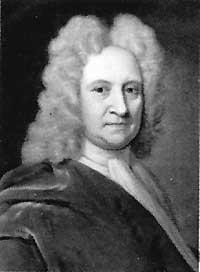Edmond Halley
English astronomer and mathematician born in Haggerston (near London) in 1656. Since he was very young he had marked the trend towards astronomy and throughout his life, but despite this, he did numerous studies on geophysics and meteorology.
At the age of twenty he began to observe the stars of the Southern Hemisphere. During his stay at the observatory on the island of Santa Elena, he formed a list of 341 stars that under the title Catalogus stellarun australium published in 1679.

Returning to England, Isaac began working with Newton. More specifically, he used Halley Newton's theory of gravitation to analyze the movement of comets. He believed that there could be law after the comet apparitions and, with the help of Newton, he devoted himself fully to research. Together they collected a lot of data on comets and based on them Halley for further research.
In 1682 Halley himself found a comet. In 1705 he saw that the lines of motion of what he and other comets described above were very similar. According to his theory, just as Newton's gravitational model can be used to study the motion of planets and satellites, the motion of comets could also be analyzed based on this rule or initiation. Moreover, Halley said that comets have very eccentric and large orbits around the Sun. Therefore, they only look when they approach Earth. He calculated the time it takes for periodic comets to move to the perihelion.
According to Halley, the comet he saw in 1682 would reappear in 1758. Although she could not see her, the comet appeared in the year she announced and then named Halley in honor of her discoverer. Theories about comet movement were collected in the book Synopsis Astronomiae Cometicae, written in 1705.
Since 1718 he took care of the movement of the stars and concluded that the location of the stars is not stable.
Since 1720 he was Court Astronomer occupying the post left by Flasmsteed. In the last 18 years of his life he carried out detailed studies on the movement of the Moon. Unfinished, death took her to Greenwich in January 1742.





